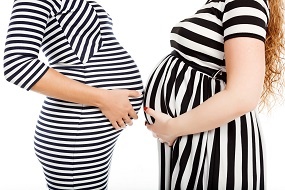 You might be tempted to think there is not a lot to know regarding pregnancy coverage for long term disability policies. The waiting periods are typically 90 days (longer than most clients are off work) and many long term DI policies have exclusions that specify they will not pay benefits for the first 90 days of a disability due to pregnancy or childbirth. Even so, new long term DI claims due to pregnancy or childbirth increased 24% in 2012 and were 10.6% of all new long term DI claims by females in 2012 and 2013 (Source: 2013 and 2014 CDA Long Term Disability Claims Review).
You might be tempted to think there is not a lot to know regarding pregnancy coverage for long term disability policies. The waiting periods are typically 90 days (longer than most clients are off work) and many long term DI policies have exclusions that specify they will not pay benefits for the first 90 days of a disability due to pregnancy or childbirth. Even so, new long term DI claims due to pregnancy or childbirth increased 24% in 2012 and were 10.6% of all new long term DI claims by females in 2012 and 2013 (Source: 2013 and 2014 CDA Long Term Disability Claims Review).
Woman make up a majority of new claimants, in 2013 they accounted for 56% of new long term disability claims approved. (Source: 2014 CDA Long Term Disability Claims Review). The chances are quite good that one of your female clients or someone close to them has suffered a long term disability due to pregnancy or childbirth.
So, it’s important to know the differences in coverage so your female clients have the best fit in coverage possible. Below are examples of the different types of exclusions, related to pregnancy, that are built into DI policies.
- Carrier A: This carrier has an exclusion included in the policy that specifies they will not pay benefits for the first 90 days of a disability due to pregnancy or childbirth. So what does that mean? There would be no benefits payable for a normal pregnancy and most minor pregnancy related problems however benefits could be payable after 90 days (even if the client has a shorter elimination period on their policy) assuming complications of pregnancy. For example, if a client is put on three months of complete bedrest followed by a difficult delivery, benefits could be payable under this policy.
- Carrier B: Under general exclusions, they list “Carrier B will not pay benefits for a disability due to normal pregnancy or childbirth, but Carrier B will cover disability due to complications of pregnancy as defined in the policy”. The wording is slightly different than Carrier A and if a client has a 60 day waiting period on their policy, they could be eligible for an additional month of benefit if there are complications of pregnancy.
- Carrier C: Under exclusions, this carriers specifies, “If the Elimination Period for Your Disability Benefit is less than 90 days, then normal pregnancy and normal childbirth are not covered Sicknesses. However, if the Elimination Period is equal to or greater than 90 days, then normal pregnancy and normal childbirth are covered Sicknesses subject to the definition of Disability.” So what does that mean? Basically, if you have a policy with a short elimination period like 30 days, you will not be eligible for benefits with a normal pregnancy and delivery. If however, you have complications, you can be eligible for benefits with no restrictions on elimination period assuming you meet the definition of disability.
A few additional details: If the client is currently pregnant when applying for coverage, that pregnancy will be excluded. If the client is in her third trimester, many carriers will postpone the client until the pregnancy is complete and the client is back to work on a full time basis. If the client has a history of infertility, complications of pregnancy and/or childbirth (including C-section) pregnancy and childbirth will likely be completely excluded on their policy. The wording of policy exclusions and limitations can vary from state to state.
Make sure your female clients know what type of coverage their DI policy provides and make sure they have the right policy!
